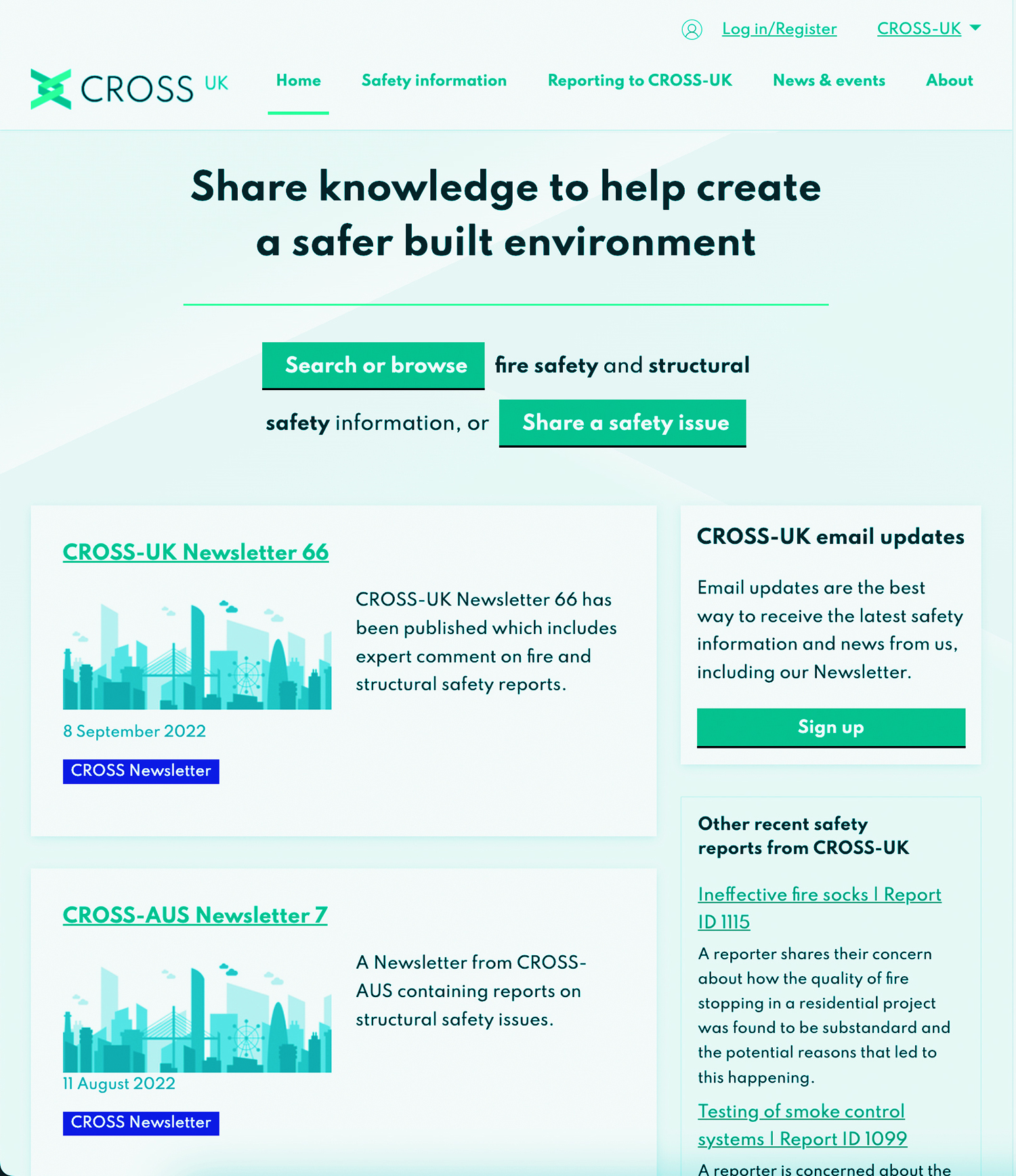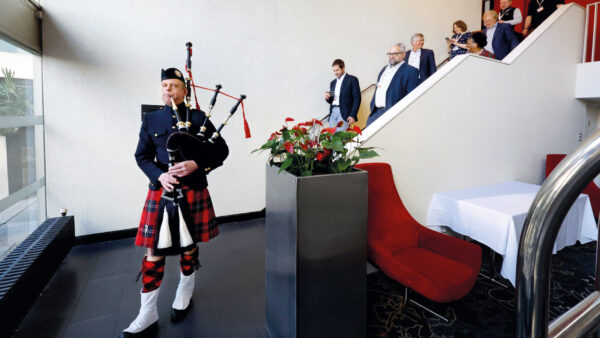
Structural safety reporting organisation CROSS has relaunched with a new emphasis on fire safety. Neil Gibbins and Peter Wilkinson explain its role.
CROSS has been in operation for over 15 years but until recently was focused on structural safety issues. It was recently relaunched with a new website and scope, while its full name – Collaborative Reporting for Safer Structures – reflects a wider remit that now includes fire safety.
CROSS was originally created by a group known as SCOSS (the Standing Committee on Structural Safety), when the leading thinkers from the Institution of Structural Engineers recognised that great benefits could be achieved by organising a route for people in their profession to share learning in a safe, independent, non-judgemental process.
Significant investment by the UK government’s Building Safety Programme team has now facilitated a complete refresh of the website and engagement with the fire sector – the driver for this being the Grenfell Tower fire and the subsequent analyses of our building safety system.
The expansion of CROSS will support fire sector learning, providing a route for professionals to safely share lessons that need to be learned and to provide some oversight of the health of the fire safety system, helping protect the public and firefighters.

Thankfully, very few people in their lifetime will suffer a loss of a friend or relative from fire. However, Grenfell demonstrated that we must not become complacent. The hundreds of tall buildings clad in a similar manner could have led to similar disasters, with potentially more unidentified failings yet to be revealed.
Dame Judith Hackitt pointed out many areas that could be improved – one of them being that there is a need for a knowledge hub.
The broad role of CROSS
CROSS has a number of functions. It provides a route for a conscientious professional to tell others about something they are concerned about, or to share something they have learned. The information given can be analysed by an expert panel that holds knowledge sufficient to identify the importance of the information and what lessons need to be taken from that.
The same expert panel sits back and looks at the system and interprets how it is working and what needs to be done to keep it being effective.Safety alerts are disseminated to give a heads-up, hopefully averting repeats that might lead to tragedies.
The fire safety sector has nothing similar to CROSS. Over the last 40 years the UK approach to fire safety has changed quite dramatically. It has gone from being almost totally owned and managed in a prescriptive manner by the fire brigades to a much more diverse, goal-based, self-compliant and complex process.
In that period the bodies responsible for providing fire-safe buildings, the people in the system and the materials used have changed dramatically. There has been little in place to bring them all together to look at the efficacy of the whole system.
How does CROSS work?
CROSS applies a process devised by NASA for the US aviation sector. Reports are received by ‘designated persons’ – the only people who know the identity of the reporter and/or the building involved. The report is deidentified and shared with the expert panel.
A CROSS report is then developed that sets out the issue reported and the lessons to be learned, signposting associated references as appropriate. This is then published. Subscribers to the website can choose to receive alerts when new reports are posted.
Over 1,000 reports have been received and reviewed, with learning points published in a quarterly update. Among those reports are nuggets of information that have been read by structural engineers and have added to the knowledge pool for the sector.
“The formation of a CROSS-UK Fire Safety Expert Panel provides the opportunity to feed informed opinion into the building safety system.”
Structural engineers are now expected to become familiar with CROSS reports. Hundreds of them have shared their learning. The expert panel also meets to review the overarching lessons identified from the reports that have been received, feeding the knowledge back into the safety system.
Fire safety as a natural partner to structural safety
In the past CROSS has received reports relating to fire safety matters. These were generally in the space where fire safety and structural safety come together.
Current issues around the use of mass timber for structural elements bring engineering challenges to both professions. However, there has been no formal interface to bring the two together in a safe space where concerns and ideas can be explored.
The formation of a CROSS-UK Fire Safety Expert Panel and regular planned events that bring it together with the CROSS-UK Structural Safety Expert Panel has provided the opportunity to feed informed opinion into the building safety system.
The expansion of CROSS is a key step that will support fire sector learning, while providing a route for professionals to safely share lessons that need to be learned and to provide some oversight of the health of the fire safety system.
Neil Gibbins is lead fire safety consultant for CROSS-UK. Peter Wilkinson is a CROSS designated person and a fire engineering consultant.












